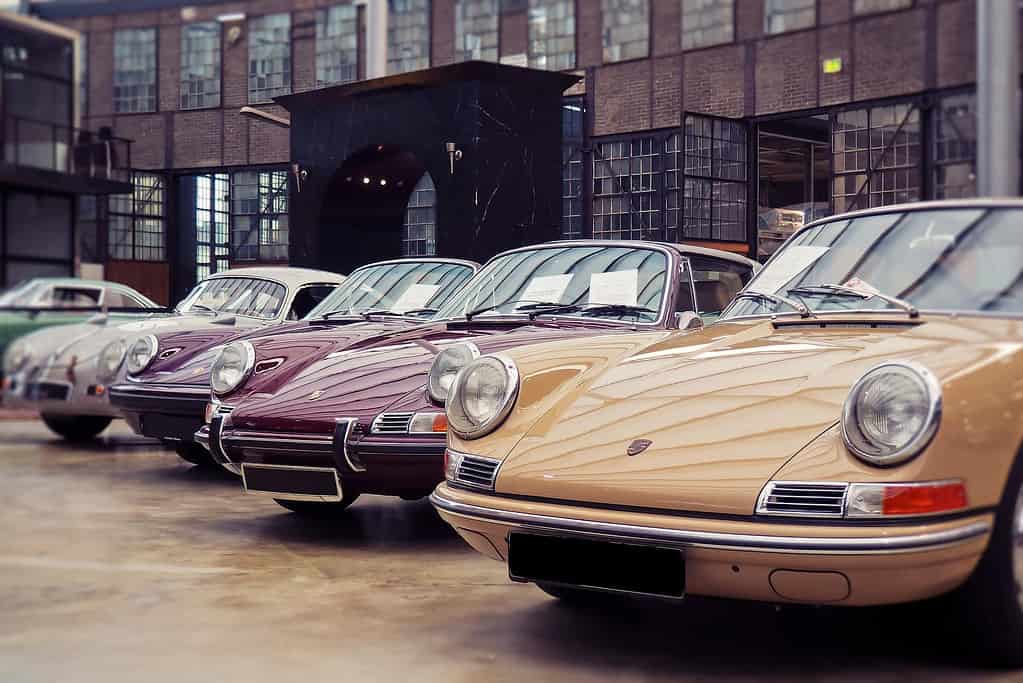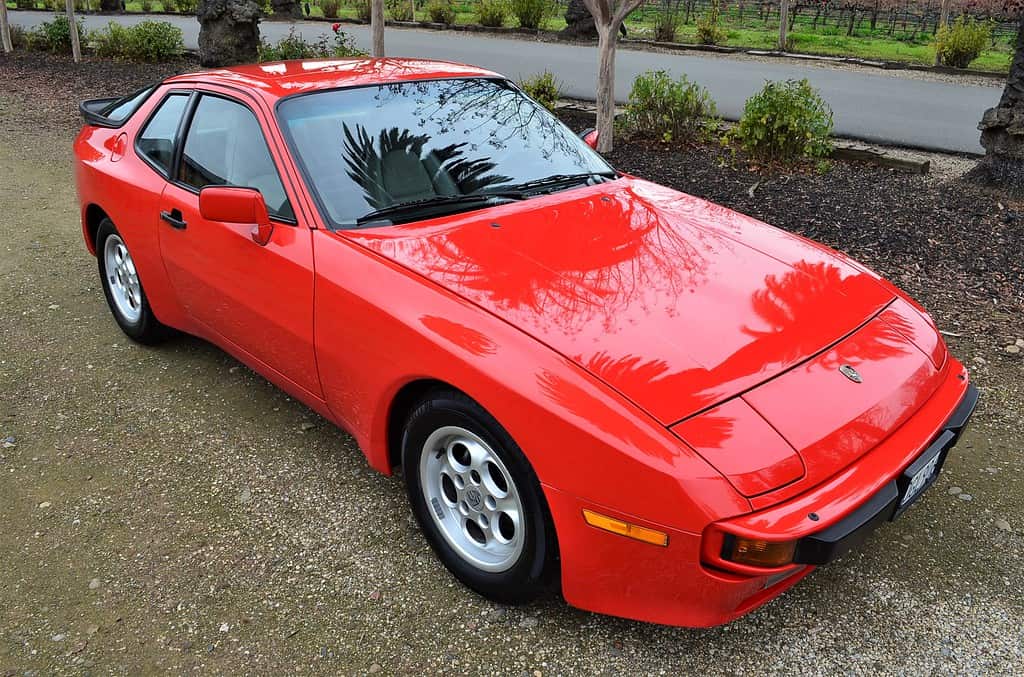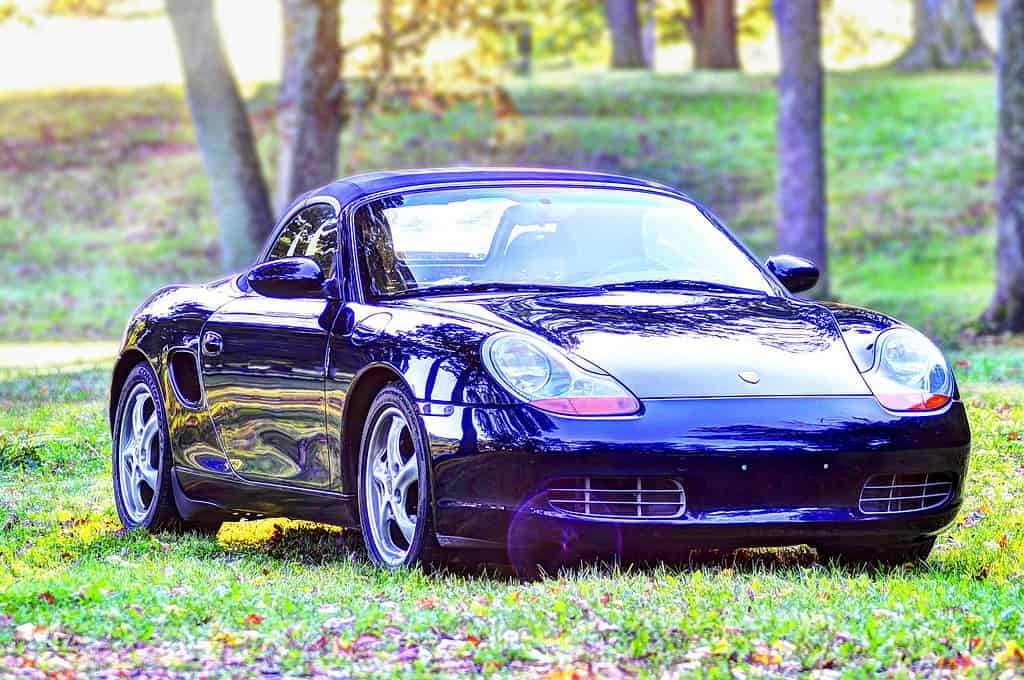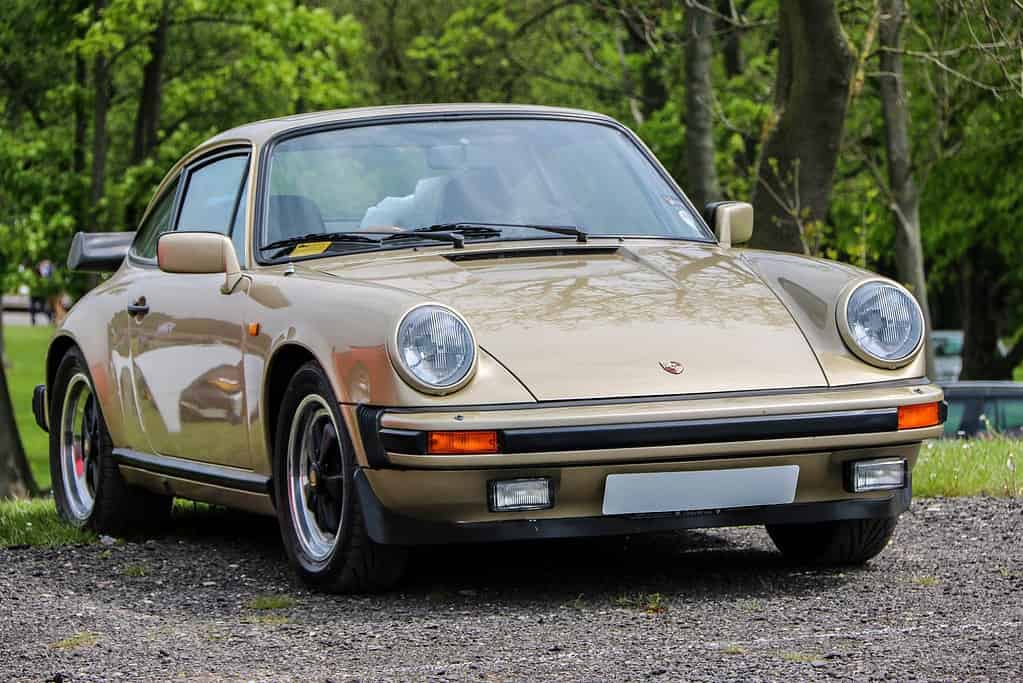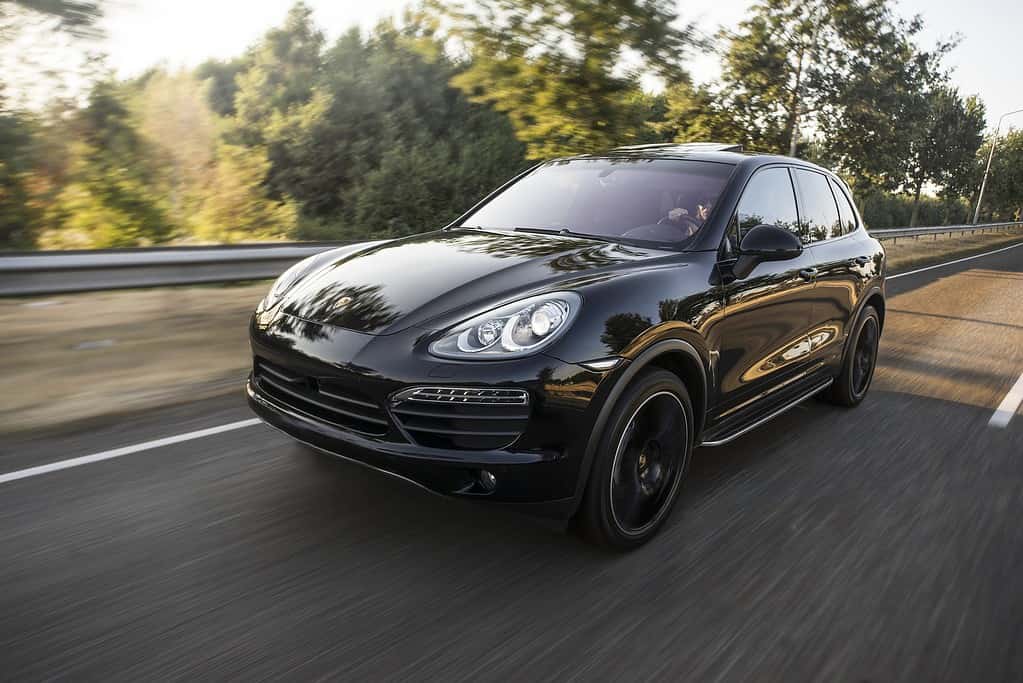Writing a general Porsche buyer’s guide seems to be an impossible task. On one hand, there are only few models in the range and on other hand manufacturers keep adding new modifications every year. It’s easy to write about specific model but something that covers everything?
If one tries to take a different approach by identifying the different customers of Porsche, it doesn’t get any easier. Die-hard air-cooled fanatics, racing enthusiasts, everyday commuters and collectors is just a small sample of all possible Porsche buyers. It’s difficult to come up with short list “stereotypes”, but they do have in common that they’ve decided buy (another) Porsche. Buying second or more Porsches isn’t very uncommon – brand loyal customers are quite often found among them.”
If we ignore the race cars and focus on just street models, it seems like a great place to start. As Porsche is known for making some of the best sports cars in history, this task might end up being rather difficult!
The sports cars
Porsche was founded in 1948 and they are most known for their sports cars, particularly the 911. They have produced many other models since then so let’s take a look at some of them starting with the Porsche 356 which started production in 1950 as an introduction to the Porsche brand but one that would be very successful throughout its life cycle lasting until 1965.

The 356 was the car that began it all. It used a lot of parts from VW beetles, but its mindset is what set them apart. In 1965 the 911 took over as Porsche’s entry level vehicle and celebrated its 50th birthday in 2013. The 912 came out in 1965 to replace the 356 at an entry-level price point until production of both models stopped around 1969 when they were replaced by their successors: 12 series (911), 14 series (914) , 15/16 Series ‘Carrera’.
The Porsche 912 was replaced with the mid-engine Porsche 914 in 1969. The car had a joint venture with Volkswagen and lasted for 7 years until it was phased out in 1976, when its total production number reached 118,978 units.


The 924 was introduced in 1975 as the entry level model for 1976, but it had its roots back with Volkswagen. However, when VW lost interest in this project and cancelled their agreement with Porsche to work on the car together they bought all rights to make sure these plans come true themselves. The early cars used quite a bit of parts from VWs which were mainly mechanical bits like engines or transmissions while later models featured more luxury things built by Porsche such as steering wheel or seats material etcetera.
Although the start for 924 wasn’t a great one (especially in the US), it had many upgrades and evolutions into 944 and later on to become 968 which made this car successful. The main difference between these models is that they all used water-cooled I4 engines, while most other Porsches use air cooled flat 6 or V8 located at front of cars. Similar design can be found with Porsche’s 1977 debuting model – the 911 replacement called as Car of Year in 1978 known as 928 . It also has an 8 cylinder engine like its successors but discontinued production by 1995 due to poor sales numbers compared against rivals such as Ferrari 348 or McLaren F1.


The Boxster really brought Porsche out of economic turmoil in the 90s. It helped bring back some life to an aging 911, allowing it to borrow many visual and technological elements from its younger sibling. Though purists won’t admit it, this was a huge turning point for the company that saw them emerge stronger than ever before
Porsche’s Cayman is an excellent sports car for those who love to drive fast. It was added in 2005 as a Boxster with a fixed roof, but now they are very similar cars- although the Porsche 911 has more practicality due its rear engine layout. The Cayman lacks power when compared to the 911, however it makes up for this with more predictable handling for all but the most expert most drivers.


The supercars
Porsche is a car company that has been producing sports cars for years, but they have also created top-of-the line machines at certain times in history. In 1986 came the Porsche 959 – an extraordinary 4 wheel drive machine with aesthetic design and great engineering power. It wasn’t available to US citizens originally due to regulations, however it can be bought by many wealthy enthusiasts today after legislation changes made possible through their influence on legislators.

In 1996 Porsche created the rarest super car of them all – The 911 GT1 Straßenversion (Street version). To qualify for the competition, at least 25 road legal units needed to be built. So in 1997 they made slight modifications on an updated model and came up with a street-legal version called 996 GT1 Street Version.
The 996 GT1 was Porsche’s first car designed to compete in the FIA GT Championship. After its introduction, it won four championship races and helped close out 1997 with a win at Le Mans 24-hour race; all of them were against much more expensive cars like Ferrari F40LMs, Mercedes CLK GTRs etc. Contrary to what you would expect from an average 911 then (and now), this one had absolutely nothing in common with that except for headlights shape – no air-intakes on rear fenders or any other body panels are present here! The engine is also not something they would have hoped for either – This monster comes straight from their successful racing program i.e., based off the twin turbo unit used by previous legendary race teams.
The 2004 Porsche Carrera GT is a hypercar that produces 450 kW from its V-10 engine. This beautiful car has redefined the modern day Porsche supercars and set an example for future vehicles in this class, but it’s had some high profile crashes since then which have tarnished its reputation. With such power and abilities on tap, one needs to respect these cars as they can get out of hand very quickly.

In 2013, Porsche developed a Supercar called the 918 Spyder. This technological marvel managed to break the 7-minute mark on Nürburgring Nordscheife and is definitely one of their most impressive creations yet!

The SUV’s and luxury cars
In 2002, Porsche gave the world an SUV and called it Cayenne. The purists looked down upon this design because of its looks initially but later versions have been beautiful to look at. From a sports car lover’s perspective, giving the market an SUV was not a good idea as many people around don’t care much for SUVs; however from a financial point-of view this has brought huge numbers in both customers and revenue for Porsche which is brilliant move by them.

Seven years later, in 2009 the Porsche Panamera saw the light of day. If you believe the pessimists, it was only created to fill a saloon car “hole” in their model range. On other hands though, its very well received by everyone and shares many similarities with its sports cars even if not equipped with a boxer engine located at back end. It is luxury through-and-through but after driving on racetrack behind wheel of one will be pleasantly surprised how makers have managed this heavy lump ignore laws of physics.

The Porsche Macan is the baby version of its larger sibling, the Cayenne. It serves as an alternative to large family cars with limited off-road capabilities for people who were interested in a smaller car that can still serve their daily purposes.

Replicas and customized cars
There are a lot of replica Porsche cars out there, but not all replicas are the same. The differences between third party kit cars and regular models converted into special models include: 1) Third party kits may look like originals from far away, but they lack original parts; 2) Regulars can be modified to resemble different versions of Porsches (e.g., 911 Carrera RS 2.7); 3) Originals tend to cost more than their conversions or imitations because authenticity is in short supply for both types while demand remains constant among fans.
Backdating is a new fad that turns 911 964s into early 911 look-a-likes with modern suspension, custom interiors and sometimes heavily tuned engines. The level of customization varies from builder to builder but the principle remains the same for each one. Singer Vehicle Design is known widely as being among those who do backdates best!
Porsche vehicles are particularly popular with car customizers because of the company’s reputation for quality and engineering, but some out-of-the box customization concepts have also become very well known. Some examples include RUF, which rebrands a Porsche base model to create its own unique vehicle; Techart adds performance upgrades like increased power or body kit parts in addition to new exterior decals; Gemballa takes this one step further by completely transforming an existing Porsche into something entirely different from what it originally was when leaving the factory floor.
Price and maintenance costs
When buying a new Porsche, it’s safe to assume that the transaction will take place at an official dealer and this is because all dealers answer directly to Porsche.
When it comes to Porsche, one has to face the fact that ownership is never cheap and as this is a premium brand, you have to keep in mind that each decision can cost quite a bit later. Of course we are talking about very different amounts if compare 924 with Spyder but there’s market for all models so you needn’t worry!
A Porsche may cost a lot of money, but the value is not always reflected in its price. The demand for certain models has been known to fluctuate over time and one should look out for market trends if they want to get an idea about how much their car could be worth at any given moment.
Porsches are generally immune to depreciation when compared with other luxury brands, and there is usually a base level where the prices flatten out. This is determined by three things: condition, rarity, mileage. Rare models or special editions in original condition that have low mileage always cost more on the market—and sometimes they never go up for sale because people buy them new directly from Porsche dealerships instead of auctions. Though options continue to grow every year within this brand’s lineup, these do not tend to affect their price tags much since Porsches rarely leave factories without at least some extras; buyers prefer fully-equipped vehicles straight off dealer lots before reselling themselves. Porsche sports cars (historically) don’t depreciate as quickly as other brands.
If you’re looking to buy a Porsche, here’s the golden rule: “Buy the one in best shape that you can afford.” Porsches are expensive and often require costly repairs. Buying a lemon will give an inaccurate impression of what owning this car entails. In general however, they tend to be very reliable if properly maintained even with some 356s still being used for daily commutes despite their age.
To find a car that stands the test of time, it’s crucial to look at its maintenance history. There are two types of owners: those who take care their cars and others who aren’t bothered with “the hassle.” If you can get your hands on detailed documentation about services performed, then you’re already one step ahead. It doesn’t guarantee anything in itself but what is included makes all the difference.
The least expensive maintenance price is in newer well-maintained cars with less power. The number of cars produced also makes a huge difference as it will be much more difficult (and pricey) to find parts for rare special editions like the turbocharged classic 911 rather than on modern ones such as the latest Porsche model.
Porsche’s philosophy states that everything produced more than 10 years ago is considered a classic, not just the early air-cooled models. The tools and facilities needed to fix these very early cars are simple but parts can be harder to come by; many of them will need to be purchased from Porsche themselves while some may only be available through independent sellers around the globe. Later model Porsches technologically complex yet offering larger selection for replacement items due in part because there are hundreds of suppliers worldwide who sell genuine factory equipment or offer recreations based on old designs still found within original spares sources like Porsche itself. Also an option is taking advantage of 3D printing and accessing the Open Road Parts Mill, which is our 3d printing part repository to help create your own parts.
Where to buy a Porsche?
When purchasing a Porsche, you have three options: Official Porsche Centers (OPC), third party dealers and private sellers. Each option has its pros and cons. Depending on the purchase method there is potential for warranties or lack thereof – it all varies from dealer to dealer/third party seller to indirect car owner . When buying directly from an OPC , there will be no warranty unless new – but then again if a history of that particular model isn’t too well known still in some cases this can go both ways depending who’s selling etc.. The list of cars available at any given time doesn’t vary much since they are usually traded-in used models being sold by other clients so not direct owners either way here as far as factory specs goes.
Third party sellers are more picky about what they accept into their stock and in many cases, will not accept cars that they cannot sell with a great deal of confidence. If the car has been abused or neglected, dealers won’t pass it on–they don’t want to hurt their own business. Prices tend to be reasonable but still include dealer profit; most third-party stocks mid/high end vehicles in good shape though reputation is key as shady places exist—caution advised!
When buying a used car, it is important to be cautious. Private dealerships are the most affordable option but also risky as there are no warranties and in worst cases you can end up with disaster on your hands. When purchasing from private dealership or seller, pre-purchase inspection (PPI) would strongly recommended for protection against risk of future damages to vehicle worthiness prior purchase .
The Pre-Purchase Inspection (PPI)
If you are confident in your skills as a mechanic, can repair cars with ease and own all the necessary equipment to do so, then taking the car for PPI yourself is an option. However most people lack these abilities or resources; often this makes it better to take their used Porsche purchase into any garage of choice rather than risk setting off alarms at Mr. Mechanic’s shop by asking him about work that he doesn’t cover on his PPI list (and which may end up costing more money because there isn’t an official “standard”). Be sure to talk over what they will check before paying them: if one particular thing has its price tag hidden away somewhere – no matter how small – it could be costly later.
What next?
Owning a Porsche is like being part of an exclusive club – you don’t understand what it’s about until you’re in the group. If this sounds right for your personality, we recommend going out and getting one today! Aside from the car there is also a vibrant community of enthusiasts all around the world. The Porsche Club of America is one of the largest and oldest Porsche groups out there. If you prefer online resources instead then the Open Road Porsche forum is a great place to start. Good luck and happy Porsche shopping!

